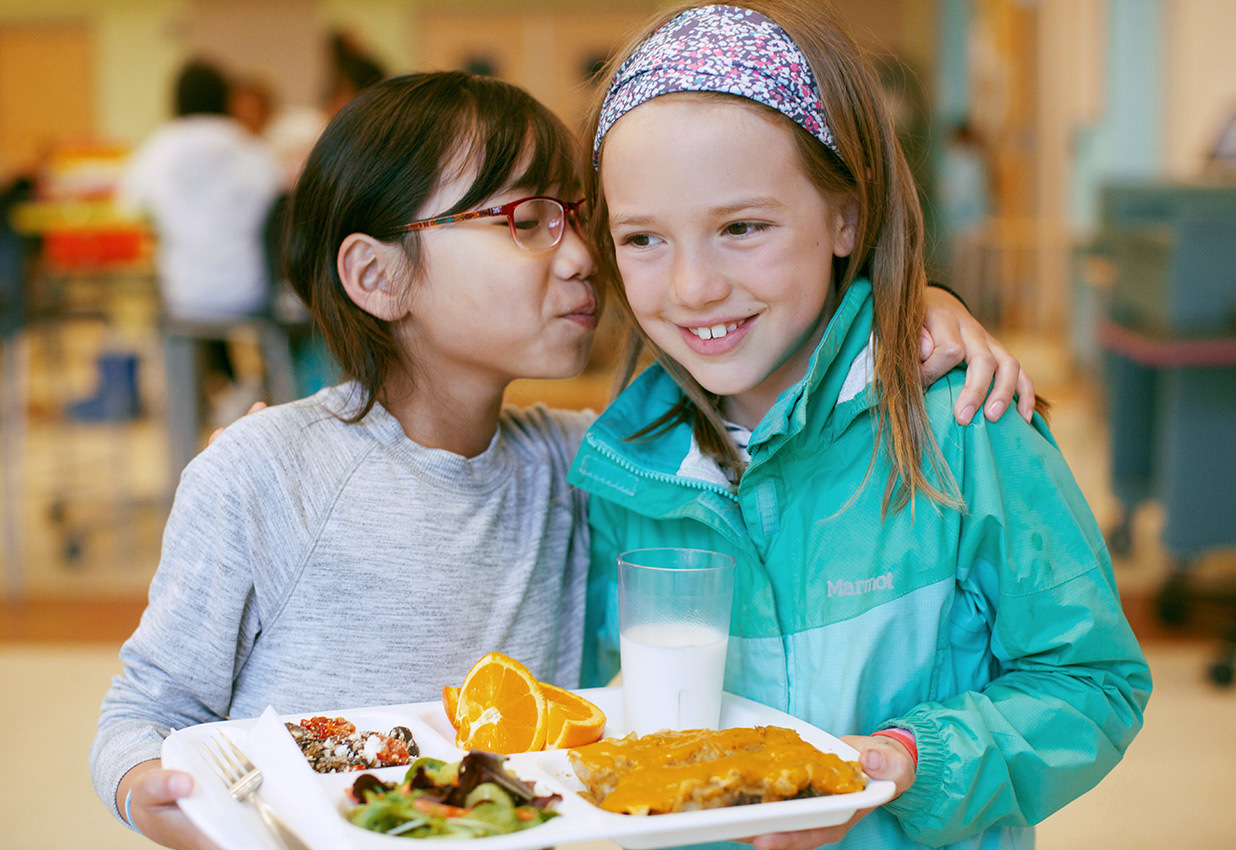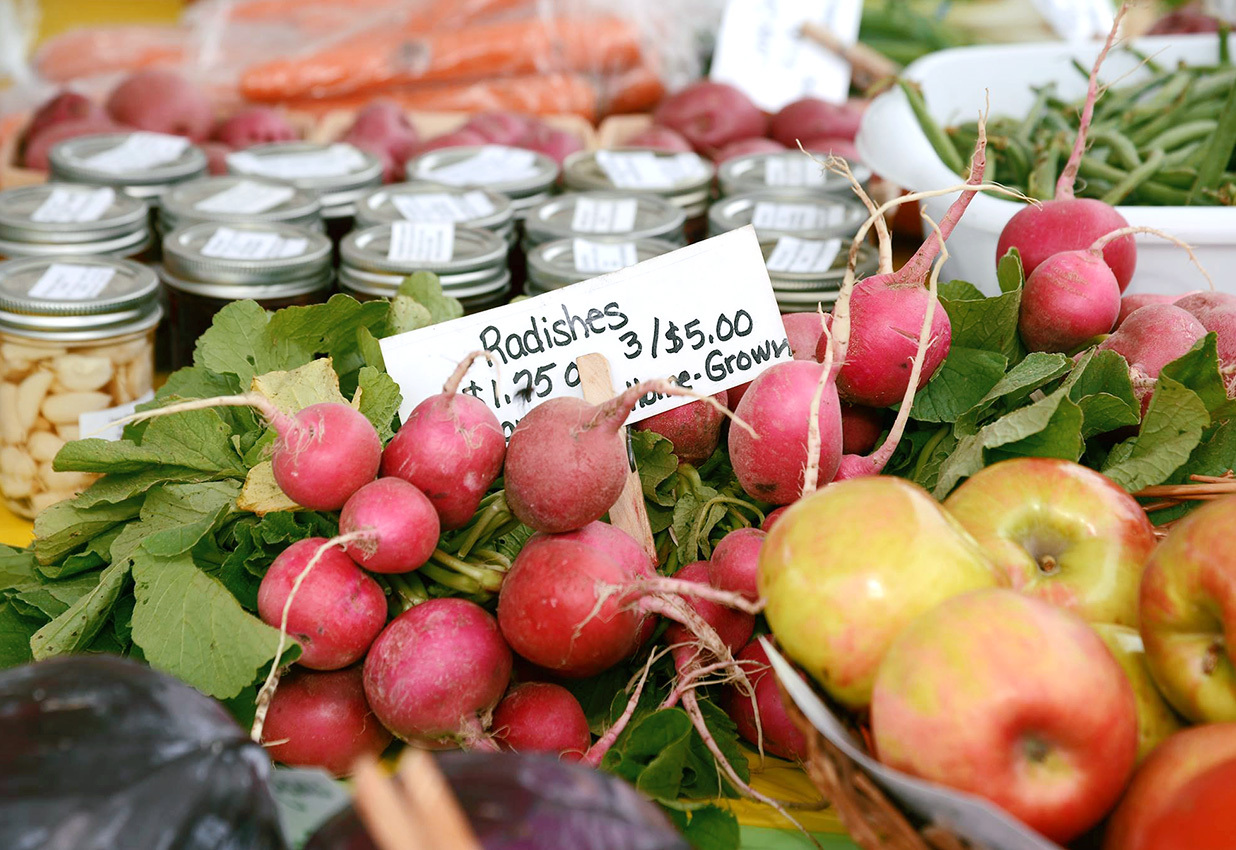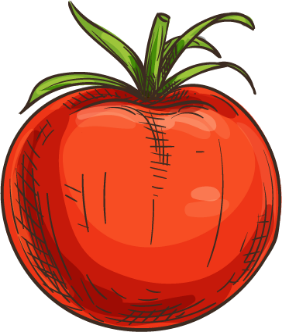
What Is Scratch Cooking?
Scratch cooking is real food with real ingredients.
There are many definitions of scratch cooking (and types of school meals in general!), but for us, scratch cooking means school districts cooking their own meals and incorporating whole, fresh ingredients, rather than pre-assembled or processed meals and meal components. Scratch cooking prioritizes the incorporation of raw proteins, whole grains, and fresh fruits and vegetables that can create nutritious and delicious meals.

What Is Scratch Cooking?
Scratch cooking is real food with real ingredients.
There are many definitions of scratch cooking (and types of school meals in general!), but for us, scratch cooking means school districts cooking their own meals and incorporating whole, fresh ingredients, rather than pre-assembled or processed meals and meal components. Scratch cooking prioritizes the incorporation of raw proteins, whole grains, and fresh fruits and vegetables that can create nutritious and delicious meals.
Transitioning to a scratch cook operation can help schools see improvement in five key areas. The below sections describe the positive impact scratch cooking can have on student health and wellness, academic performance, equity, sustainability, and the school food workforce.
Benefits of Scratch-Cooking

PROMOTES HEALTHY BEHAVIOR
School districts that increased the proportion of fresh and scratch cooked foods offered reported improved student nutrition and increased consumption of fresh fruits and vegetables, increased physical activity, and improved cognitive function.
DECREASES UNHEALTHY FOODS AND RISK OF DISEASE
Scratch cooking eliminates processed foods high in sodium, added sugars, and saturated fats, lowering the odds of overweight/obesity, diabetes, and high blood pressure (source).

PROMOTES HEALTHY BEHAVIOR
School districts that increased the proportion of fresh and scratch cooked foods offered reported improved student nutrition and increased consumption of fresh fruits and vegetables, increased physical activity, and improved cognitive function.
DECREASES UNHEALTHY FOODS AND RISK OF DISEASE
Scratch cooking eliminates processed foods high in sodium, added sugars, and saturated fats, lowering the odds of overweight/obesity, diabetes, and high blood pressure (source).
IMPROVES ATTENDANCE AND PARTICIPATION
Well-nourished children are less frequently tardy or absent, have fewer behavioral problems, have increased school engagement, and participate in class at a higher rate (source).
RAISES TEST SCORES AND GRADES
Better-quality diets are linked to better grades, and improved test scores due to improved cognitive function, increased work capacity, and longer attention spans, with a particularly positive improvement for low-income students.


IMPROVES ATTENDANCE AND PARTICIPATION
Well-nourished children are less frequently tardy or absent, have fewer behavioral problems, have increased school engagement, and participate in class at a higher rate (source).
RAISES TEST SCORES AND GRADES
Better-quality diets are linked to better grades, and improved test scores due to improved cognitive function, increased work capacity, and longer attention spans, with a particularly positive improvement for low-income students.

INCREASES SCHOOL MEAL PARTICIPATION
Scratch cooked meals drive increased meal participation at schools, reducing the stigma associated with eating school lunches. Studies show increased Average Daily Participation (ADP) between 3 - 16% (9% average) and increased generated revenue.
CREATES APPEALING FOOD
Scratch cooking in schools can provide more equitable outcomes for students in the lunchroom by providing appealing, palatable food that can be tailored to student’s unique cultural backgrounds by utilizing fresh ingredients and offering greater flexibility in menu development.

INCREASES SCHOOL MEAL PARTICIPATION
Scratch cooked meals drive increased meal participation at schools, reducing the stigma associated with eating school lunches. Studies show increased Average Daily Participation (ADP) between 3 - 16% (9% average) and increased generated revenue.
CREATES APPEALING FOOD
Scratch cooking in schools can provide more equitable outcomes for students in the lunchroom by providing appealing, palatable food that can be tailored to student’s unique cultural backgrounds by utilizing fresh ingredients and offering greater flexibility in menu development.
SUPPORTS LOCAL FARMERS
Scratch cooking provides the foundation that makes local procurement more attainable (source). Each dollar invested in farm-to-school stimulates an additional $0.60 - $2.16 of local economic activity.
REDUCES ENVIRONMENTAL IMPACT
With a shift to more plant-forward meals, districts report significantly reducing their water, carbon, and waste footprints. Fresh, scratched cooked meals can also reduce schools’ reliance on single use disposable items prevalent in processed meals.
GENERATES SAVINGS AND REVENUE
Schools serving healthier options realized more net revenue, with the same or reduced cost of production (particularly using plant-forward meal planning).


SUPPORTS LOCAL FARMERS
Scratch cooking provides the foundation that makes local procurement more attainable (source). Each dollar invested in farm-to-school stimulates an additional $0.60 - $2.16 of local economic activity.
REDUCES ENVIRONMENTAL IMPACT
With a shift to more plant-forward meals, districts report significantly reducing their water, carbon, and waste footprints. Fresh, scratched cooked meals can also reduce schools’ reliance on single use disposable items prevalent in processed meals.
GENERATES SAVINGS AND REVENUE
Schools serving healthier options realized more net revenue, with the same or reduced cost of production (particularly using plant-forward meal planning).

CREATES VALUED WORKFORCE
Investing in personnel enhances employee engagement, morale, knowledge, and classroom-to-cafeteria connections. Professional development and talent recruitment have enhanced meal quality, student satisfaction, and increased participation.
INCREASES SCHOOL FOOD PATHWAYS
School districts that scratch cook can attract culinary professionals to school food careers, reducing the likelihood of worker shortages and providing a pathway for managerial and leadership positions.

CREATES VALUED WORKFORCE
Investing in personnel enhances employee engagement, morale, knowledge, and classroom-to-cafeteria connections. Professional development and talent recruitment have enhanced meal quality, student satisfaction, and increased participation.
INCREASES SCHOOL FOOD PATHWAYS
School districts that scratch cook can attract culinary professionals to school food careers, reducing the likelihood of worker shortages and providing a pathway for managerial and leadership positions.

Want to print this list?
To download this full list of benefits & sources, click here!
Ready to get started with scratch-cooking?
Here are some recommended places to start:
- For more information on our grant programs, including salad bars, visit our Apply for a Grant page.
- For help with scratch cooked recipes, visit our School Recipes section to view over 300 recipes that are delicious, follow USDA requirements and include cost and nutrition analysis.
- For support developing your program’s vision, planning your menu, how to best use your commodity dollars and incorporating local products, visit the Procurement section of our website.
- For resources on fiscal management and staffing, visit the Management section.
- Visit the Marketing and Lunchroom Education section to get ideas about marketing your efforts to the larger school community and ways to engage students in your program.
- Learn more about scratch cooking in school food with the School Food Institute’s School Food 101 course. Apply for a scholarship here.


Ready to get started with scratch-cooking?
Here are some recommended places to start:
- For more information on our grant programs, including salad bars, visit our Apply for a Grant page.
- For help with scratch cooked recipes, visit our School Recipes section to view over 300 recipes that are delicious, follow USDA requirements and include cost and nutrition analysis.
- For support developing your program’s vision, planning your menu, how to best use your commodity dollars and incorporating local products, visit the Procurement section of our website.
- For resources on fiscal management and staffing, visit the Management section.
- Visit the Marketing and Lunchroom Education section to get ideas about marketing your efforts to the larger school community and ways to engage students in your program.
- Learn more about scratch cooking in school food with the School Food Institute’s School Food 101 course. Apply for a scholarship here.
Recommended Next Topic: School Recipes
Recipes are the heart of school food change. These recipes have been developed by school food professionals, kid-tested, and perfected in school kitchens.
Recommended Next Topic: School Recipes
Recipes are the heart of school food change. These recipes have been developed by school food professionals, kid-tested, and perfected in school kitchens.






